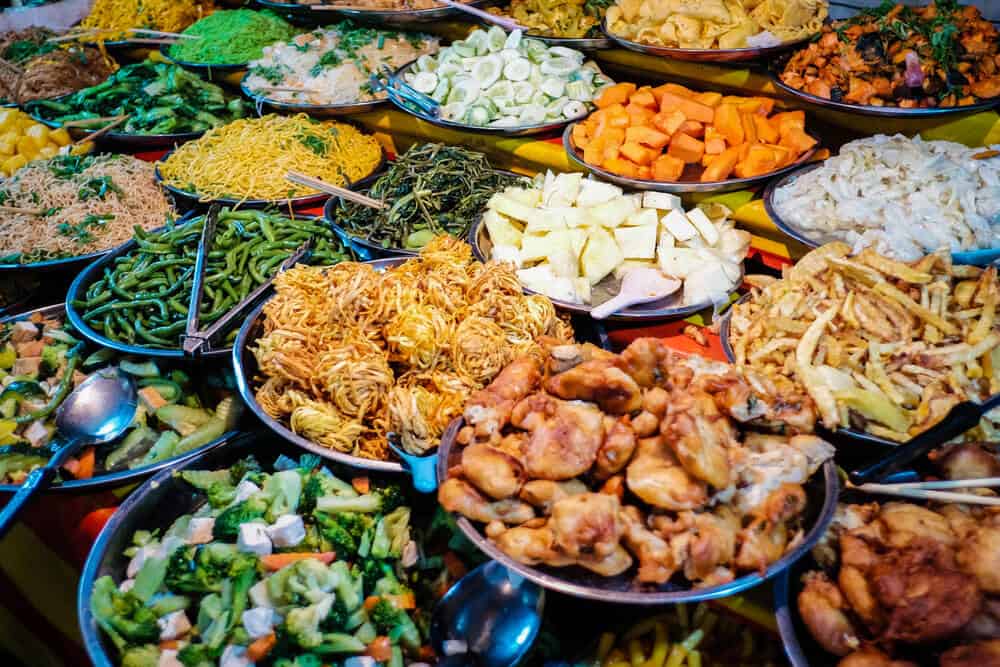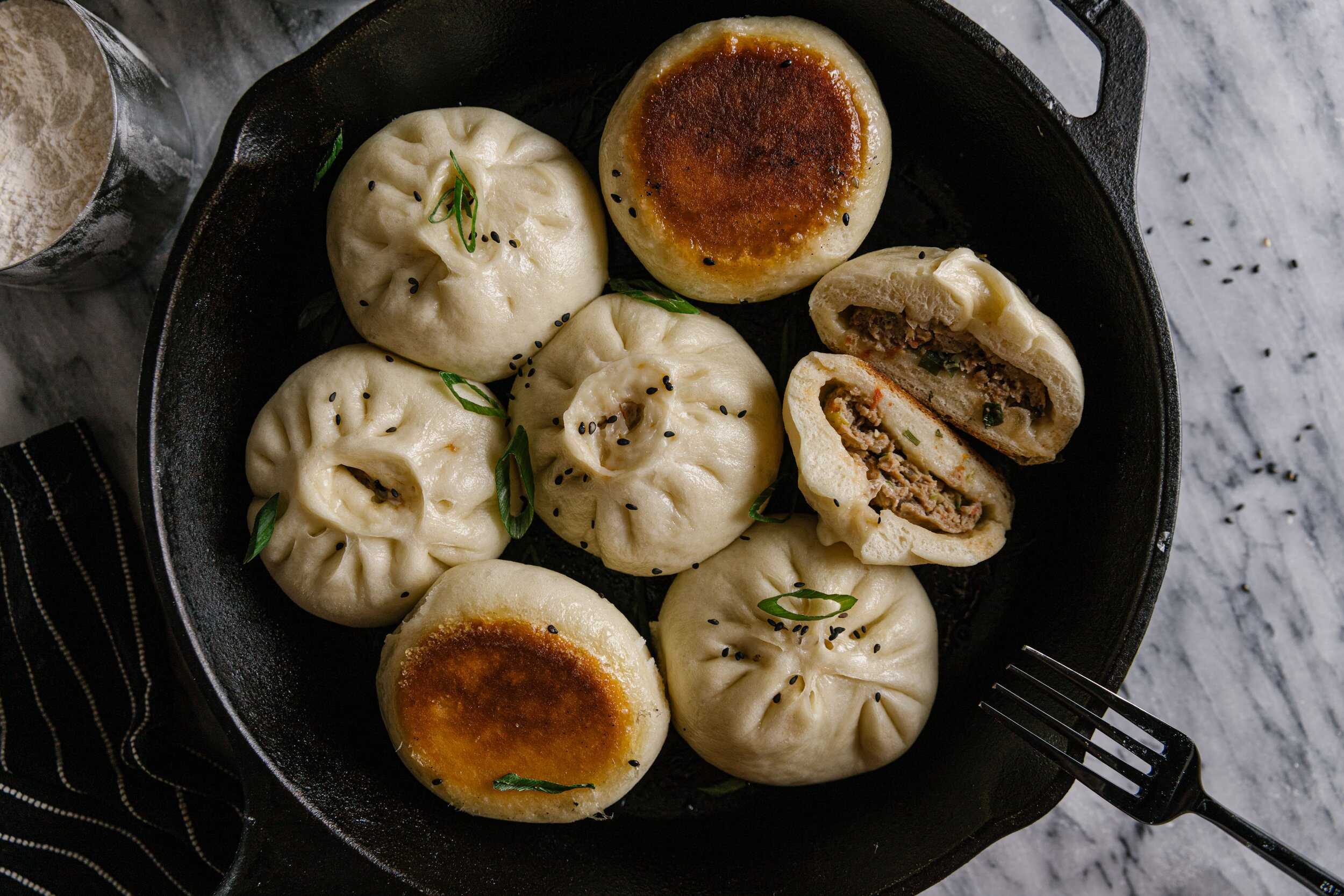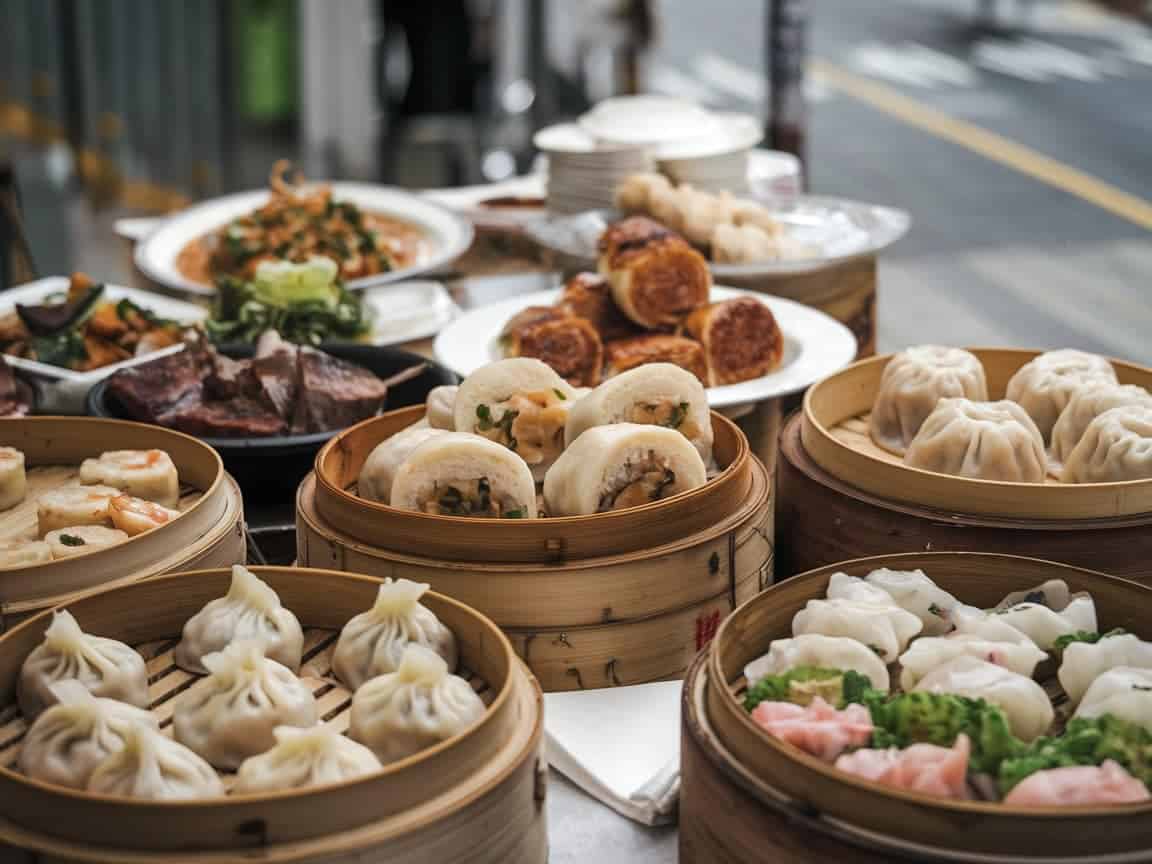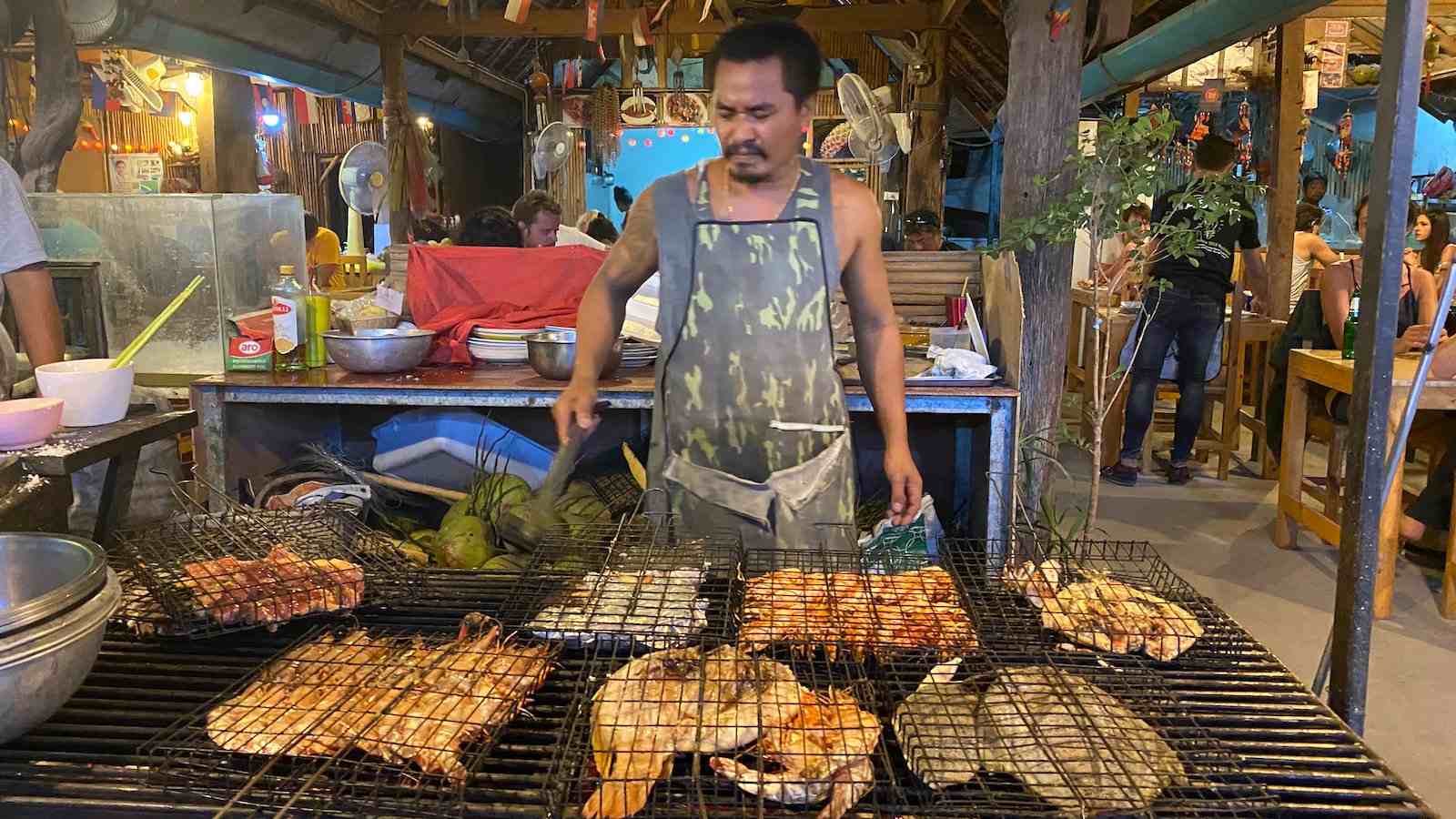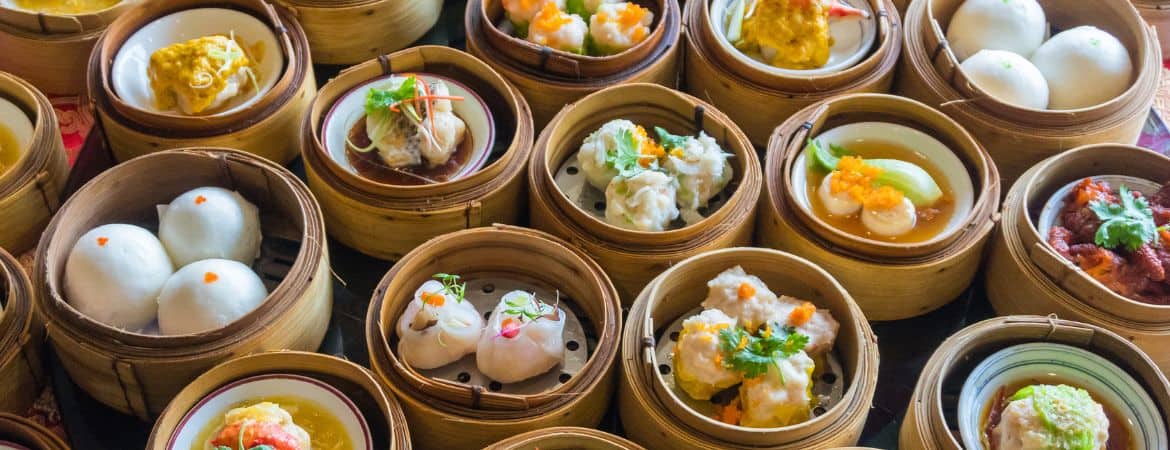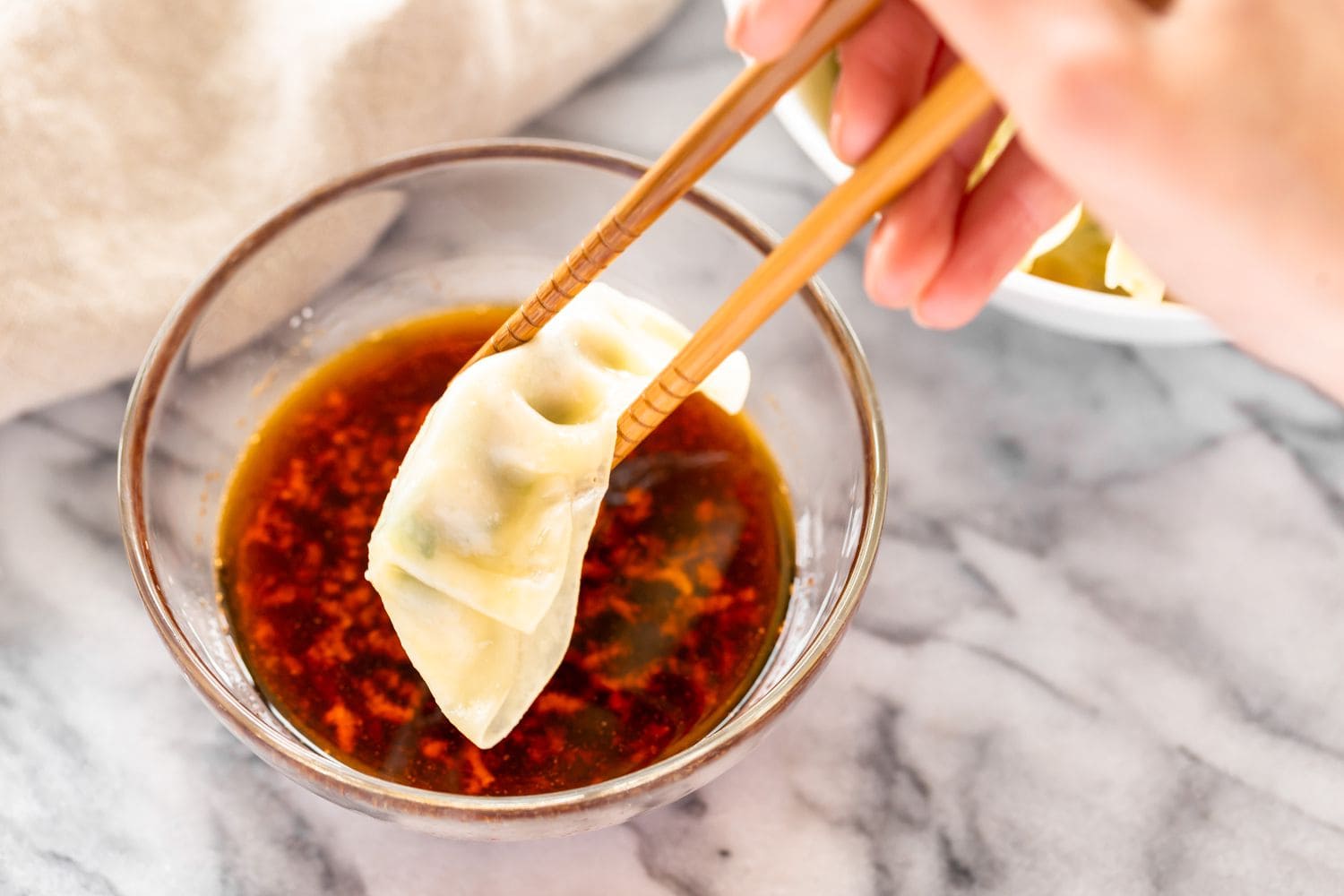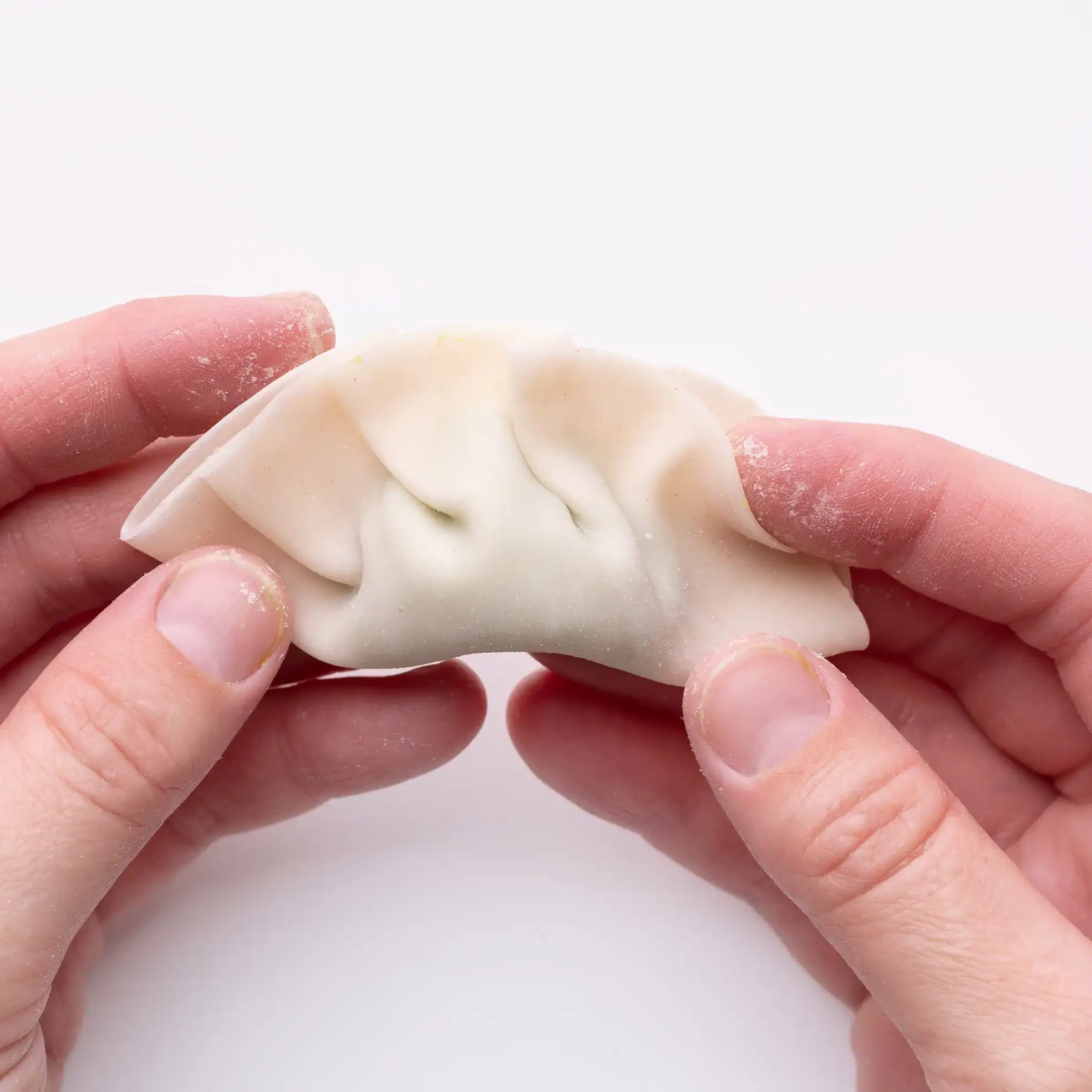Picture yourself wandering through a bustling market where mouthwatering scents fill the air, drawing you closer with each step. The vibrant atmosphere is alive with the chatter of locals and the sizzling sounds of street vendors preparing their delicious offerings.
Here, you’ll discover a variety of steamed buns and dumplings that not only satisfy your hunger but also your curiosity.
As you meander through the colorful food stalls, the skilled hands of the chefs shape baozi with precision, showcasing the true artistry involved in this beloved street fare.
Each bite tells a story, reflecting the rich culture and traditions that have influenced these delightful treats. With every flavorful bite of steamed buns, dumplings, and baozi from the bustling street vendors and food stalls, I felt a deeper connection to the vibrant culture around me.
| Category | Details / Description |
|---|---|
| Cultural Influence | Chinese diaspora (mainly Hakka and Cantonese), Lao cuisine, Thai and Vietnamese flavors |
| Popular Locations | Vientiane (capital), Luang Prabang, Savannakhet, Pakse |
| Common Settings | Street stalls, morning markets, night markets, roadside eateries |
| Local Name / Term | Often called “dim sum” or “sai khop jeen” (Chinese sausage snacks) in casual street food context |
| Typical Dishes | – Siu Mai (Lao style with pork and glass noodles) – Baozi (often with pork or mung bean) – Fried wontons – Sticky rice dumplings |
| Key Ingredients | Minced pork, glass noodles, mushrooms, scallions, fish sauce, garlic, coriander |
| Flavor Profile | Savory, slightly sweet, aromatic with Lao herbs and light spice |
| Texture Style | Often steamed or deep-fried; chewy and soft textures dominate |
| Local Twists | – Use of fermented fish sauce (padek) – Topped with fried garlic or fresh herbs |
| Accompaniments | – Jeow mak len (Lao tomato chili dip) – Sweet soy or vinegar-based dipping sauces |
| Fusion Variants | Dim sum with sticky rice, coconut dumplings, or Lao-style sausage as fillings |
| Meal Timing | Common for breakfast or evening snacks; dim sum served alongside Lao-style coffee or tea |
| Presentation Style | Baskets, banana leaves, small plastic trays; bamboo steamers used occasionally |
| Tea Pairings | Local black tea, jasmine tea, Thai iced tea (when served in sit-down cafés) |
| Vegetarian Options | Available, but less common; mostly mushroom dumplings or mung bean buns |
| Local Perception | Seen as a casual, comfort food with Chinese heritage; especially popular among young Lao foodies |
Understanding Steamed Buns And Dumplings
There’s something truly special about those fluffy pockets of goodness found in Lao cuisine. They bring together a tapestry of flavors and tradition that makes them a beloved choice for many.
The delightful varieties you’ll encounter are distinct, with each offering a different texture and an array of savory snacks that can tantalize any palate.
Picture soft, billowy buns contrasted with the satisfying chewiness of dumplings, each filled with everything from hearty meats to fresh vegetables.
Must-try options include Zongzi, which are packed with sticky rice and meats, and the versatile Baobun, inviting you to experiment with endless filling combinations.
You’ll often spot these tasty treats at street cuisine stalls, where the aromas wafting through the air can be absolutely irresistible. Pair them with a zesty chili sauce for a delightful complement to rice noodles and savory snacks in your hot pot street cuisine.
How To Choose Local Delicacies?
Diving into the world of culinary delights can turn any trip into an exciting quest! Let your senses guide you—notice those vibrant colors and the irresistible aromas wafting through the streets. When you see a food cart bustling with eager diners, you’re likely onto something special.
Chat with locals about their favorite traditional dishes; they usually love to share hidden gems from their culinary culture.
If you’re fortunate, you might even get a taste of freshly made rice cakes before making a decision.
Street food is all about embracing the authentic flavors of the area, and it’s an adventure waiting to unfold.
Culinary Exploration
- Street food markets often feature local dishes that reflect the region’s culture and history.
- Engaging with locals can lead to discovering unique culinary experiences and traditional recipes.
- Food carts frequently offer freshly prepared items, ensuring a taste of authentic local flavors.
- Street food is an affordable way to sample a variety of dishes in a short amount of time.
Exploring The Role Of Street Vendors
Picture yourself strolling through vibrant streets filled with enticing aromas. Here, you’ll discover vendors serving up delightful snacks that capture the essence of local life.
In Laos, these culinary artists play a pivotal role in creating a lively food scene where everyone gathers to savor quick bites and connect.
From mouthwatering fried wontons to refreshing herbal teas, the array of flavors reflects recipes lovingly passed down through generations.
It’s more than just food; it’s a tapestry of community woven through shared meals and cherished traditions. This rich food culture, bursting with tastes and experiences, brings joy to every corner of the street. So, what’s your go-to snack? Is it something classic like spring rolls, or do you have a hidden gem in mind? As we explore the local delicacies, consider how flavors intermingle with herbal teas, tapioca, fried wontons, and banh cuon.
Flavor Profiles Of Savory Snacks
Picture yourself wandering through the vibrant streets of Laos, where a tantalizing array of snacks beckons from every corner. These delightful morsels shine with rich umami flavors, like the sticky rice bursting with savory pastries that set your taste buds on a joyride.
Fermented fish sauce adds a deep, savory punch to each bite, making it hard to resist.
Fresh herbs and local spices are key to crafting these snacks, layering flavors that elevate your experience, especially at the lively night market scene.
The contrasting textures—crunchy and chewy—further enrich your culinary adventure, making every bite memorable. Each snack reflects a slice of culinary heritage, sharing stories from Laos’s vibrant culture, allowing you to savor both the flavors of savory pastries and the delights found at the night market, complemented by rich dipping sauces that come alive during the food festival.
Snacks in Laos
- Laos is known for its unique culinary heritage, which includes a variety of savory pastries and snacks.
- The use of fresh herbs and local spices enhances the flavors and overall experience of Laotian street food.
- Night markets in Laos are vibrant hubs where diverse snacks and rich dipping sauces are readily available.
- Contrasting textures, such as crunchy and chewy, are integral to the enjoyment of Laotian snacks.
The Art Of Dipping Sauces
In Lao cuisine, these tasty accompaniments are all about bold flavors and fresh ingredients that work together to create a delightful dining experience. Imagine dipping something delicious into a concoction made with fish sauce and lime juice, resulting in that perfect harmony of spicy, tangy, and savory notes.
Take Jaew, for example.
It’s a popular choice, especially when paired with grilled skewers, adding a vibrant burst of flavor that makes each bite memorable.
Sharing these sauces at a hawker center brings people together, crafting a sense of community that enhances the enjoyment of every snack. What’s your go-to street food pairing with a dip? Let’s dive into these grilled skewers from the hawker center, highlighting fresh ingredients and diverse flavor profiles that enhance the joy of communal dining.
Communal Dining In Food Stalls
There’s something magical about enjoying a meal where everyone shares the experience. Gatherings around these lively stalls offer a fantastic place for cultural exchange, where the atmosphere is buzzing with energy and excitement.
Here, diners can savor small plates filled with regional specialties, making every bite a delightful surprise.
As friends and family pass around steaming baskets of dumplings and share spicy condiments, the laughter and conversation flow freely.
It’s more than just eating; it’s about the connections formed over memorable meals that celebrate local flavors. This sense of community truly elevates the experience, making each visit a cherished memory. Transitioning from the delightful act of sharing meals, let’s dive into the art of dipping sauces, which serve as a cultural exchange through an array of small plates, spicy condiments, and regional specialties that complement steaming baskets of food.
Cultural Exchange Through Food
- Shared meals foster stronger interpersonal connections and community bonds.
- Sampling small plates allows diners to experience a variety of regional flavors in one sitting.
- Food gatherings create a vibrant atmosphere that encourages laughter and conversation.
- Dipping sauces enhance the flavor profile of dishes, showcasing unique culinary traditions.
What Makes Traditional Dishes Unique?
Every bite of a classic dish opens a window to a different world. Each recipe is a delightful blend of cultural influences and local ingredients, revealing the essence of its origins.
These meals embody a region’s history and personality, and you can really taste it! Take handmade dumplings, for example.
They differ significantly from one culture to another, showcasing the unique culinary art and flavors of their respective places.
Then there are family recipes—true treasures handed down through generations.
They infuse food traditions with nostalgia, transforming each meal into a heartfelt connection to those who came before us.
The cooking techniques also contribute significantly; traditional methods enhance flavors and textures, making the dish even more appealing to our taste buds. Think of those portable meals that capture the essence of handmade dumplings, celebrate ethnic cuisine, preserve food traditions, and showcase the beauty of culinary art.
Discovering Culinary Heritage Through Night Markets
As dusk falls, an exciting world of flavors unfolds in the vibrant night markets of Laos. These lively hubs offer more than just a quick bite; they are dynamic showcases of the country’s rich gastronomy.
Wandering through the colorful stalls, you’ll be enveloped by aromas of grilled meats and fragrant herbs, with each dish whispering tales of cultural legacy.
The fusion dishes showcased invite both locals and curious tourists to savor bite-sized treats, ensuring a delightful experience with every visit.
Vendors proudly present traditional offerings like larb and khao piak sen, celebrating the essence of Lao culinary heritage.
Relishing these dishes, one can easily appreciate how shared meals reinforce community ties. So, what’s your favorite food stall or dish that brings back fond memories? The nights of exploring local gastronomy were filled with fusion dishes and vibrant flavors, savoring every bite-sized treat along the way.
Night Markets in Laos
- Night markets in Laos are vibrant hubs showcasing the country’s rich gastronomy.
- Popular dishes include larb and khao piak sen, which highlight traditional Lao culinary heritage.
- Fusion dishes at these markets attract both locals and tourists, enhancing the dining experience.
- The shared experience of enjoying food at night markets strengthens community ties among visitors.
Conclusion
As you reflect on your food experiences, it’s clear that every dish offers a gateway to a rich culinary diversity. Dining isn’t just a routine; it opens the door to a world steeped in history and tradition.
Each vibrant street fair or cozy noodle soup stall you visit shares a unique narrative, inviting you to savor the flavors of the culture.
By enjoying these traditional recipes, you not only indulge your palate but also connect with the community’s heritage.
So, as those delightful tastes linger in your memory, let them inspire your next food adventure. Happy eating as you explore the culinary diversity of noodle soup through traditional recipes at the vibrant street fair.
